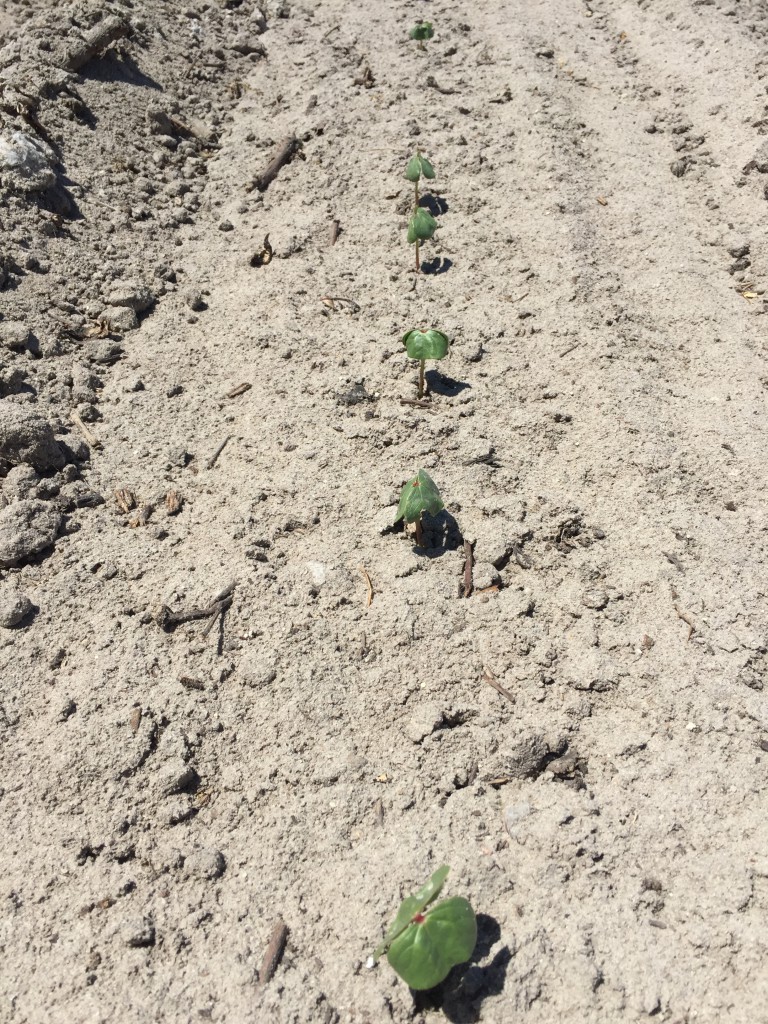
So I know 95 and 96 degrees are not “hot” for South Georgia. But it is hot, when we have had such mild conditions thus far in 2021. We received several emails from our UGA Extension Specialists this week on planting considerations and young crop issues that may arise.
Wes Porter compiled an overview of row crop water needs at this time with the rising temperature and low rain chances that we have for our area. There are also comments from other specialists mixed in:
Corn: On average I would say the corn across the state is around 10 weeks after planting, some is tasseling, some isn’t quite there yet. We are knocking on the door of peak corn water usage. We are seeing roots using moisture as deep as 18+ inches on our sensors now. The problem is we cannot replace moisture this deep with overhead irrigation systems. Here are some thoughts and how I would approach it:
- Apply irrigation amounts of at least 0.3 to 0.5 inches, and don’t try to use the irrigation system for a “cooling effect”.
- Amounts less than 0.3 inches are going to have very little effect on soil moisture, and the time it takes to apply these small amounts really isn’t going to benefit the entire field for cooling, so I strongly suggest based on the time it takes your system to apply it, applying around the 0.5-0.75 inch range every 2-4 days. This will replenish shallow soil moisture, provide the crop with moisture in the root zone and let it transpire and self-regulate its own temperature.
- Now is not the time to fall behind on corn irrigation. With most of our corn moving into peak water usage some systems may need to run almost continually over the next few weeks. Just keep this in mind, if we deplete our deep soil moisture now we will struggle to replenish it without a good soaking rainfall.
Cotton: Most of our cotton is very young and in the stage of not requiring much if any water. Camp Hand, John Snider and I have discussed this and here is what we are currently recommending:
- Temperatures higher than 95 degrees can negatively impact growth and development .
- In extremely hot environments it is recommended that growers apply a light irrigation event to help cool the crop.
- However, similar to corn, very low irrigation applications, most likely won’t be much help, so we are recommending that you apply two 0.3 to 0.5 inch events per week.
- This amount is low enough not to saturate the soil but high enough to ensure that the root zone will have moisture.
- Also keep in mind some of the issues that have already been shared by Camp and Stanley about herbicides and planting into hot dry soil conditions:
- Planting into moisture is key. When planting into moisture, seeding depth wasn’t as important concerning herbicide injury. However, when planting into dry soil, cotton planted 0.7” deep noted 17% higher visual injury from PRE-applied herbicides than cotton planted 0.35” deep.
- Soil temperature greatly influences cotton germination and root growth. Normal lateral root growth can occur at soil temperatures of 93 F, but soil temperatures above 104 F can severely limit root growth. Anything that could be done to reduce soil temps/retain soil moisture could be beneficial with respect to planting and establishing a stand.
- Fields can be pre-watered to help with some of these problems but don’t over apply irrigation, usually 0.5” is a sufficient amount prior to planting.
- Avoid planting dryland fields if at all possible over the next few days to week.
Peanuts: Very similar to cotton, most of our peanuts are just being planted or are very young and the water use is very low.
- The recommendation is to apply around 0.3 to 0.5 inches twice a week until we cool down.
- Fields can be pre-watered to help with some of these problems but don’t over apply irrigation, usually 0.5” is a sufficient amount prior to planting.
- Keep in mind Eric Prostko’s post about the potential for Valor injury and irrigation .
- These low amounts of irrigation should not cause injury, especially in the current conditions as it is better to get an adequate stand.
- For irrigated fields, growers need to consider irrigating ahead and then again after planting to make sure seed have enough moisture to germinate and emerge. Remember not to plant peanuts in dry hot soil and water after planting. This could shock the peanut seed causing erratic emergence over a 1 to 2 week period.